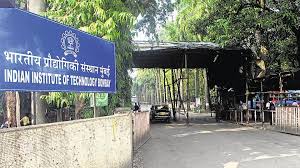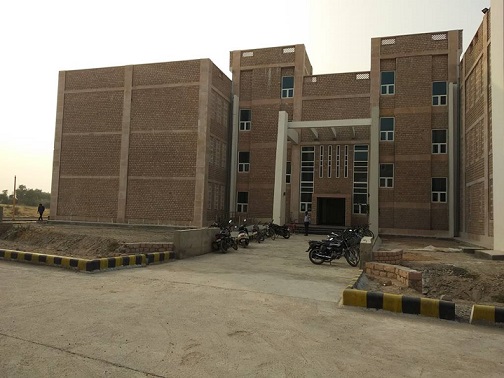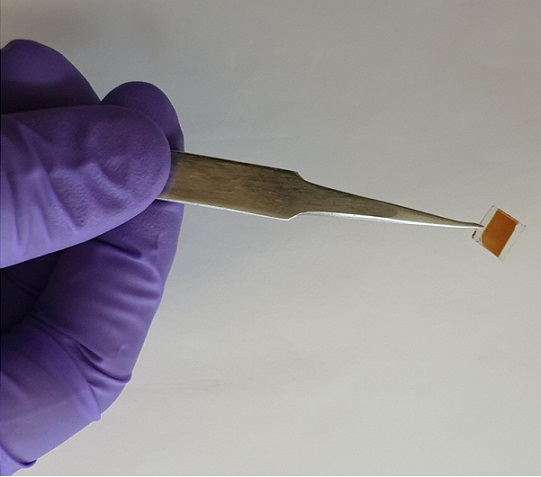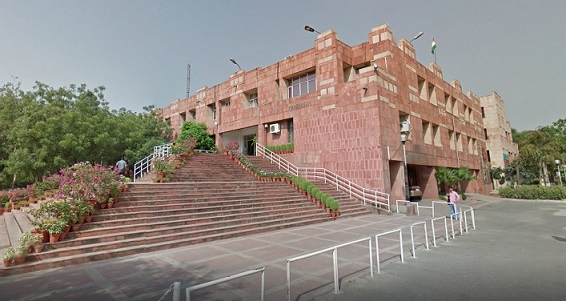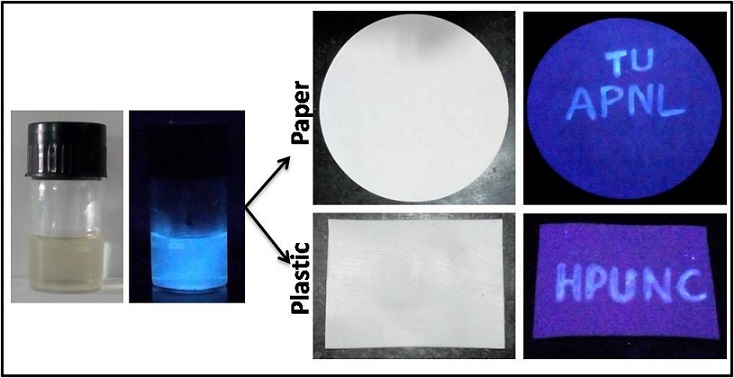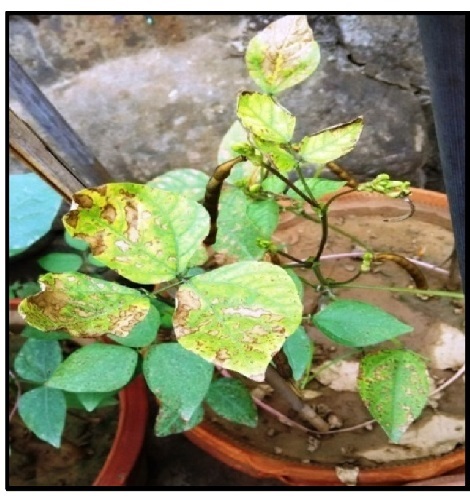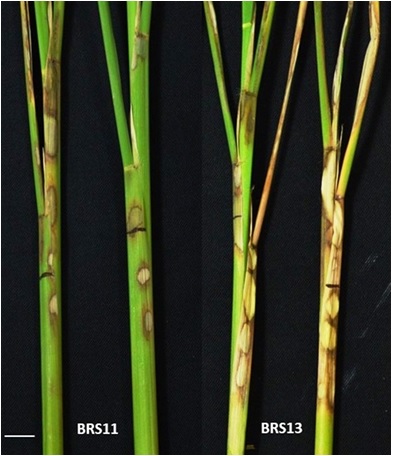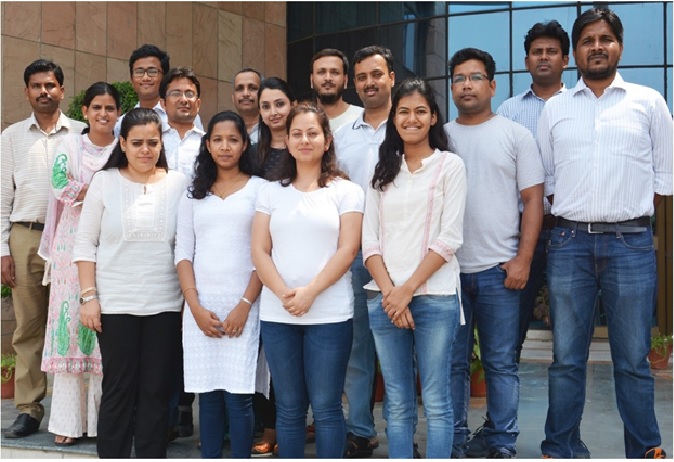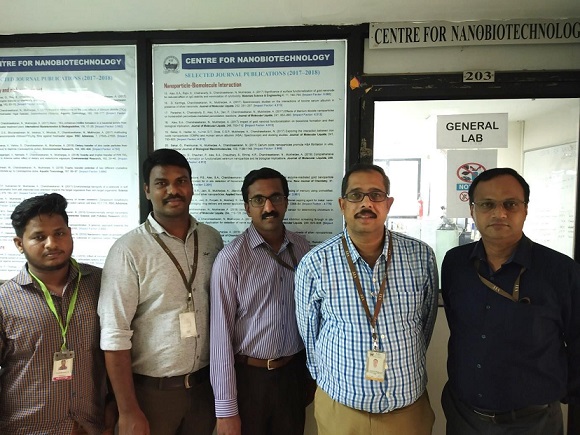
Researchers at VIT: (Left to Right) S. Vijayakumar, Dr. P.M. Gopinath, Dr. John Thomas, Dr. Amitava Mukherjee and Dr. Natarajan Chandrasekaran
Plastics – the wonder material known for its durability, stability and affordability – has become a major environmental challenge in recent years. This pervasive nature of plastic in environment has led to its entry in the human body, posing a threat to human health.
With over 400 million tons of plastic production globally every year, the plastic still remains a choice for industries such as cosmetics, food packaging, utensils etc. Much of waste plastic ends up in dump yards and also gets accumulated in water bodies. A number of studies have shown its adverse effects on marine ecosystem and its presence in the bodies of marine animals such as fishes, molluscs, turtles etc. The plastic reaches bodies of its producers, humans, by consumption of sea food, closing the full circle.
While macro-plastics remains a visible problem, micro-plastics and nano-plastics which are generated through physical, biological and chemical actions on plastic are emerging a more serious health hazard. Due to their invisible nature, micro and nano plastics can enter human bodies through use of products that contain nano-plastics such as scrubs, lipsticks, mascara, shampoos etc., other than by consumption of sea food. Recent studies have also found micro-plastics in tap and bottled water. The workers in textile and PVC industries also inhale nano-plastics unknowingly.
“Other than the food chain, constant contact with day-to-day life plastic products allows oral, dermal and inhalation exposure to micro-plastics and additive chemicals to human body. Therefore, it is important to determine the interactions between the micro-plastics and biological macromolecules in order to understand their effects on human health,” explains Prof. Natarajan Chandrasekaran, Professor at Vellore Institute of Technology, who is engaged in studying the impact of micro plastics in humans.
" Other than the food chain, constant contact with day-to-day life plastic products allows oral, dermal and inhalation exposure to micro-plastics and additive chemicals to human body. "
According to industry estimates, an average Indian consumes approximately 11 kg of plastic products in various forms every year. Though it is much less than what an American or a Chinese does, still it is a problem.
Scientists say that plastic particles can reach our stomach, and depending on their size, these plastics are either excreted, get entrapped in stomach and intestinal lining or move freely in body fluids such as blood, thereby reaching various organs and tissues of the body. In line with this, a study carried out by Austrian scientists had shown that stool from individuals in eight surveyed countries contained microplastics. Similarly, high levels of BPA (Bisphenol A), a chemical used for making several plastics has been found in urine of teenagers, in another study done by scientists from the University of Exeter based at United Kingdom.
While a number of studies have shown negative effects of plastics on nervous system, hormones, immune system together with cancer-inducing property of plastics are already well known, scientists are now trying to understand how the basic machinery of body interacts with plastic particles. In a new study, Prof. Chandrasekaran and his colleagues have looked at the interaction of nanoplastics with blood proteins and cells illustrating their adverse effects on human health. The group has shown that nano-plastics aggregate in blood, obstructing its flow in body and render blood proteins non-functional.
For this study, blood was taken from five healthy males and then separated into plasma (protein portion of blood), white blood cells and red blood cells. Researchers then tested interaction between nano-plastics and plasma. It was found that blood proteins such as albumins, globulins, fibrinogens, which play an important role in osmotic pressure, molecular transport, blood coagulation, immune response etc., are absorbed on the surface of nano-plastics forming plastic-protein complex with size ranging from 13 to 600 nanometers.
Once plastic particles are fully surrounded by proteins, the plastic-protein complexes are attracted towards each other resulting in aggregation of these complexes. Scientist say that these aggregates in blood stream can block flow of body fluids. Also, this complex formation leads to structural and conformational changes in the blood proteins rendering them non-functional.
In addition, researchers also tested interaction of both nano-plastics alone and aggregated plastic-protein complexes with white blood cells and red blood cells. It was found that aggregated plastic-protein complex is more toxic and potent in causing the death of white and red blood cells than the nano-plastic alone. “Next, our research would be focused on how the aggregated micro- and nano-plastic complexes are taken up by cells, their movement within the cell and its related hazards and ailments,” said Dr. Chandrasekaran while speaking to India Science Wire.
The research team included Ponnusamy Manogaran Gopinath, Vinayagam Saranya, Shanmugam Vijayakumar, Mohan Mythili Meera, Sharma Ruprekha, Reshamwala Kunal, Agarwal Pranay, John Thomas and Amitava Mukherjee. The results of study have been published in journal Scientific Reports.
India Science Wire

